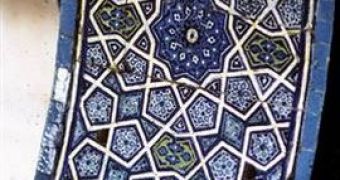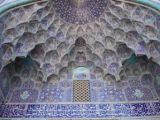You may be amazed by the wonderful geometrical patterns seen in tile mosaics that adorn medieval Islamic architecture.
Islamic art traditionally uses a mixture of calligraphy, geometric and floral designs because of a prohibition of the portrayal of the human form.
Scientists were also impressed to see that those adornments follow quasicrystalline geometry patterns, unknown in the West until the 1970s.
Researchers have long believed that sheer hard work with a ruler and compass allowed medieval craftsmen to make the complicated star-and-polygon tile patterns that are today seen in mosques, shrines and other buildings, stretching from Morocco and Turkey through Iran to India.
Now, Harvard graduate student Peter J. Lu, who designs physics experiments for the International Space Station, comes with the idea that more than 500 years ago, the builders employed maths for making far more complex tile patterns that ended up in what mathematicians today calls "quasicrystalline designs."
"It shows us a culture that we often don't credit enough was far more advanced than we ever thought," said Lu, who was amazed by the tilework in Uzbekistan.
Quasicrystals are made by fitting together a set of shapes, including five- and ten-sided shapes, into patterns that, opposite to the typical tile floors, do not repeat. Lu and Princeton physicist Paul Steinhardt noticed that the polygon-shaped tiles (decagon, pentagon, diamond, bow tie and hexagon) appeared in the main Islamic buildings from the 12th through 15th centuries.
When the researchers investigated architectural scrolls that were important training manuals for those times, they discovered hand-drawn outlines of the five shapes. Searching through thousands of photos of medieval Islamic buildings, Lu discovered that the same pattern was increasingly used over the years leading to ever-more complex ones, even a seemingly real quasicrystal by 1453. "You can go through and see the evolution of increasing geometric sophistication. So they start out with simple patterns, and they get more complex," Mr Lu added. "They made tilings that reflect mathematics that were so sophisticated that we didn't figure it out until the last 20 or 30 years."
"This would be a hitherto undiscovered episode in the spectacular developments of geometry in central Islamic lands ... achieved by artisans probably inspired by theoretical mathematicians," said Islamic art specialist Oleg Grabar.
Photo credit: W.B.Denny

 14 DAY TRIAL //
14 DAY TRIAL // 
